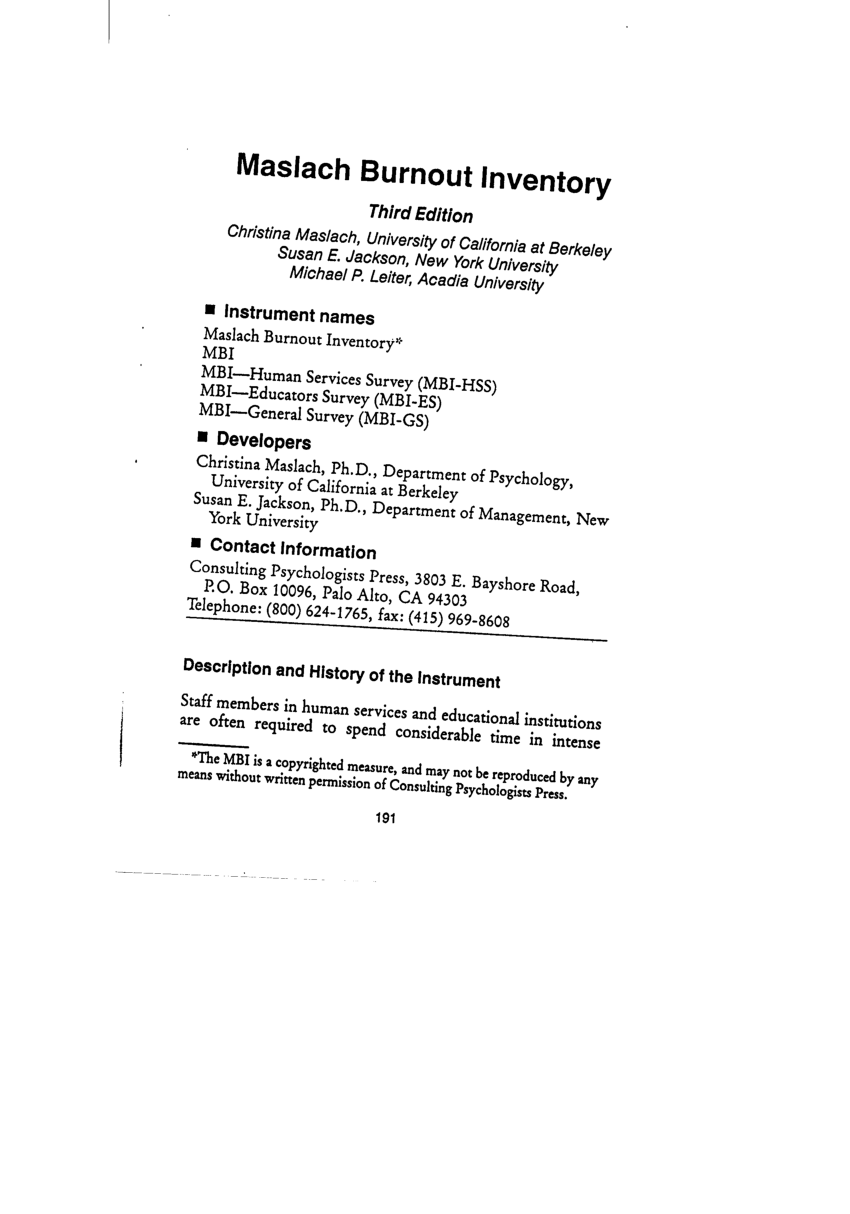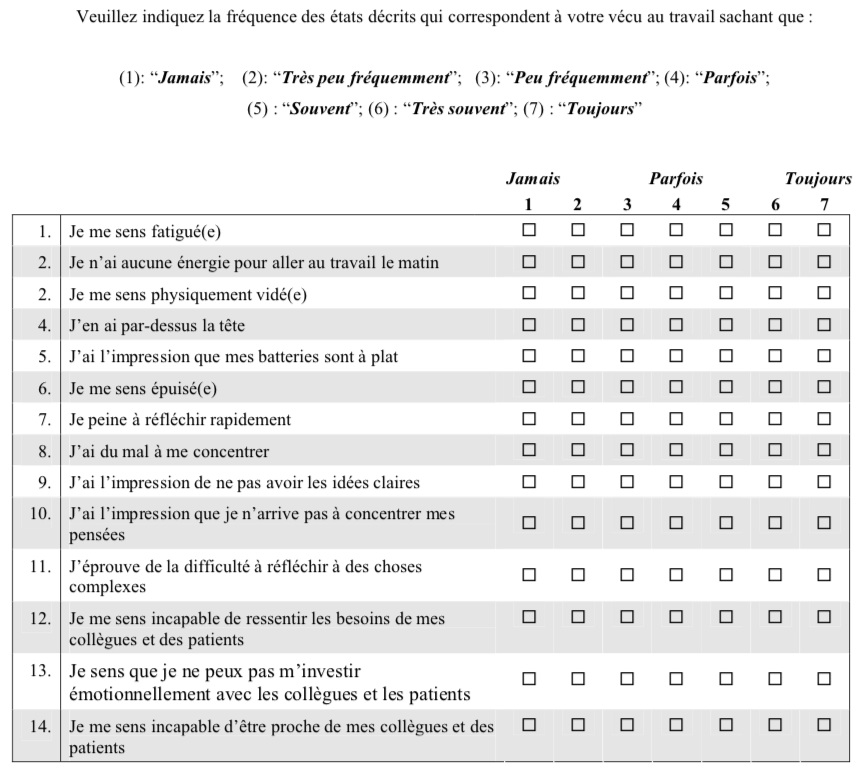

The Sinhala version of the 15-item MBI-SS is a valid and a reliable instrument to assess the burnout status among collegiate cycle students in Sri Lanka. All three subscales show high internal consistency with Cronbach’s α coefficient values of 0.837, 0.869, and 0.881 and test-retest reliability was high ( p < 0.001). A modified version of the MBI-SS, with item 13 deleted, emerged as an acceptable fitting model with a combination of absolute, relative and parsimony fit indices reaching desired threshold values. Only one item (item 13) was identified as having poor psychometric properties. ResultsĬFA revealed that the three-factor model of the MBI-SS fitted the data better than the one-factor and the two-factor model. The construct validity of the MBI-SS was assessed using multi-trait scaling analysis and confirmatory factor analysis (CFA), while reliability was assessed using internal consistency and test-retest reliability, which was assessed after an interval of two weeks. The pre-tested Sinhala version of the MBI-SS was administered to a sample of 194 grade thirteen students in the Kurunegala district, Sri Lanka. Hence, this study was aimed at assessing the factorial structure, validity, and reliability of the MBI-SS among collegiate cycle students in Sri Lanka. Even though the validity of the Maslach Burnout Inventory-Student Survey (MBI-SS) is widely assessed across the globe, there is a paucity of related literature in the South Asian settings.
#Maslach burnout inventory test professional
Conclusions: High work engagement of staff midwives was correlated to high professional efficacy and cynicism of their immediate superiors, suggesting that there might be crossover effects on mental conditions for work between staff midwives and their immediate superiors.With ever increasing educational expectations and demands, burnout has emerged as a major problem negatively affecting the wellbeing of different student populations. There was no correlation of work engagement between them. High work engagement of staff midwives was significantly correlated with the professional efficacy (AOR 1.93, 95% CI 1.12 - 3.33) and cynicism (AOR 2.01, 95% CI, 1.04 - 3.90) of their immediate superiors. Results: Immediate superiors showed significantly higher level of work engagement than staff midwives, while there was no difference in the burnout. To examine the association of work engagement among staff midwives with their ages, marital status and work engagement and burnout of their superiors, logistic regression analysis was conducted. Work engagement and burnout (exhaustion, cynicism, and professional efficacy) were assessed by the Utrecht Work Engagement Scale and the Maslach Burnout Inventory-General Survey, respectively. Questionnaires were distributed to 452 midwives/nurses working on maternity and labor wards of 20 hospitals and responses from 96 staff midwives and 17 of their immediate superiors were analyzed. Methods: A cross-sectional questionnaire survey was employed in Japan. The aim of study was to examine the work engagement and burnout of staff midwives working on maternity and labor wards and to determine the factors related to high work engagement of staff midwives, including their immediate superiors’ work engagement and burnout. Work Engagement, Burnout, Staff Midwives, Immediate SuperiorsĪBSTRACT: Introduction: Mental conditions for work among workers are related to clinical performance and influenced by colleagues within the same workplace. Relationship of High Work Engagement among Staff Midwives with Their Immediate Superiors’ Burnout on Maternity and Labor Wards in JapanĪUTHORS: Emiko Kawauchi, Reiko Inoue, Kazutomo Ohashi and Leiter, M.P., Eds., The Maslach Burnout Inventory: Test Manual, Consulting Psychologists Press, Palo Alto, CA.

(1996) Maslach Burnout Inventory-General Survey.


 0 kommentar(er)
0 kommentar(er)
